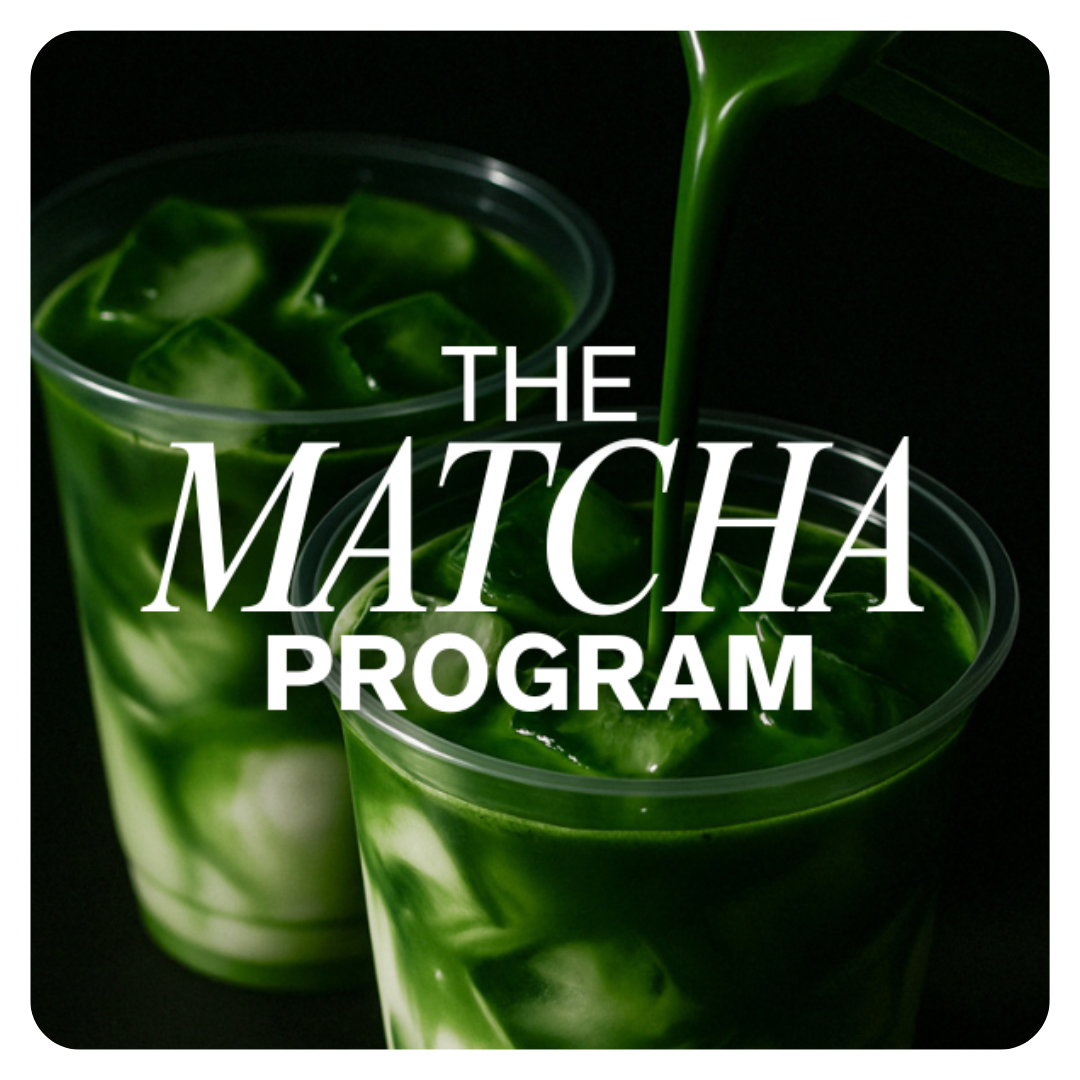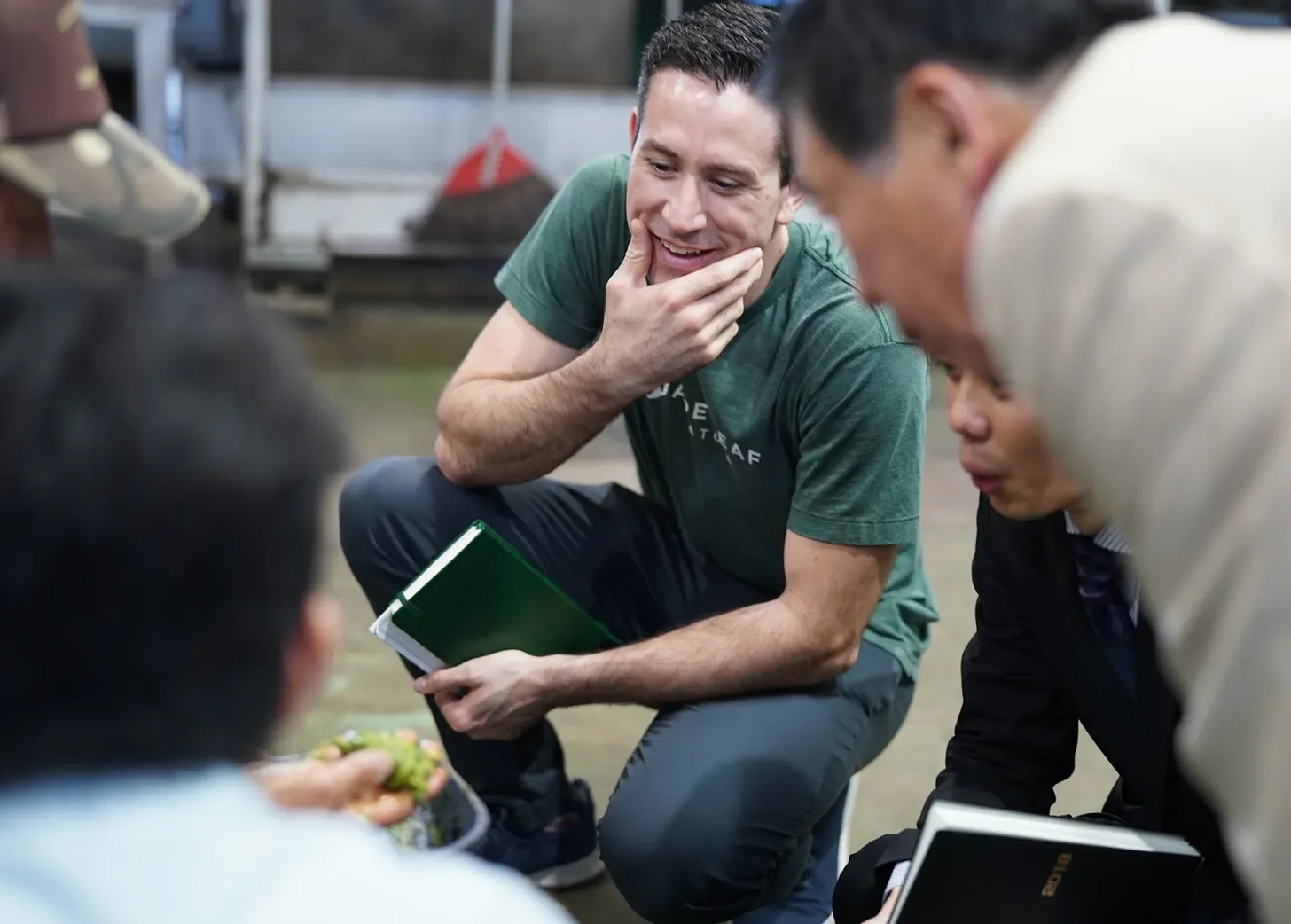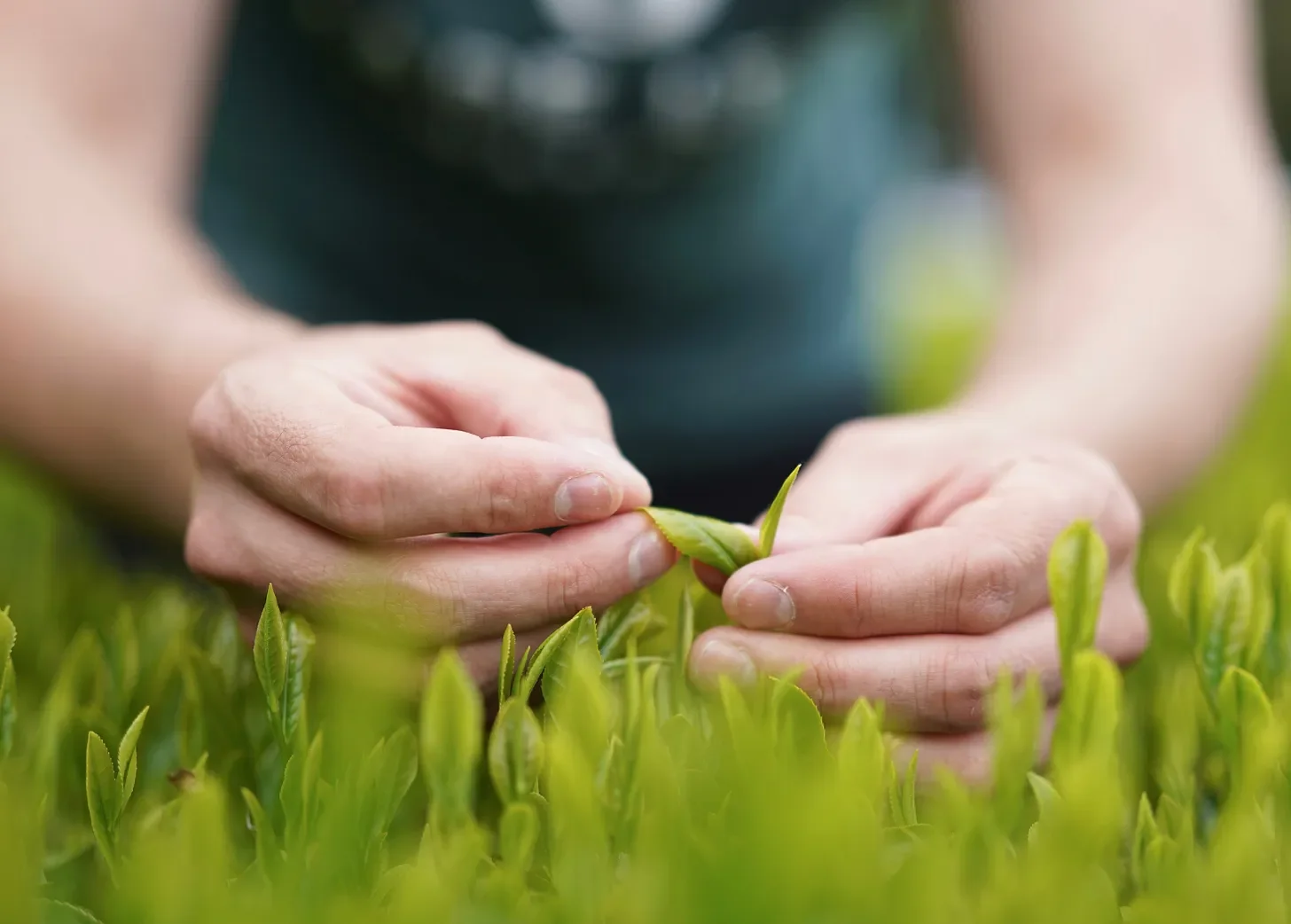Matcha Education for Cafes | Questions Every Barista Should Be Able to Answer
TL;DR for Busy Operators
The same way baristas confidently talk about coffee, its origins, processing, roast level, and flavor profile, matcha deserves that same level of fluency. Customers are curious, and your ability to speak with confidence builds trust and elevates your cafe’s perceived expertise.
Most baristas in dual coffee and matcha programs can easily walk a customer through the nuances of espresso extraction but stumble when asked basic matcha questions. This piece outlines the foundational matcha knowledge every barista should know because education is one of the most powerful tools in elevating your program.
🚨 Quick Note: Help shape The Matcha Program! We would appreciate your feedback.
Thank you all for your continued support of The Matcha Program! We launched just a month ago and have been surprised by the level of support and enthusiasm for our content. Your feedback means the world as we continue shaping this resource for cafe operators and baristas.
If you’ve been following along, we’d love for you to take a quick survey to share what’s been most helpful and how we can improve future content.
Introduction
An example of sourcing transparency and storytelling within a cafe’s specialty matcha program.
In specialty coffee, baristas are celebrated for their expertise. They can tell you where a coffee was grown, how it was processed, what flavors you might taste, and how the roast impacts extraction. That confidence and storytelling ability create trust, and that trust keeps customers coming back.
In contrast, matcha education in most high-volume cafes is still catching up. When customers ask about the matcha being used, they’re often met with uncertainty or vague answers like “It’s ceremonial grade” or “I think it’s from Japan.”
This isn’t because baristas or cafe operators don’t care. Accessing this information from vendors can be challenging due to limited transparency at the industry level, and most matcha education is written for consumers, not operators. While there are excellent matcha vendors with robust wholesale programs and partner resources, many do not equip cafes with the same depth of training, tools, or context that coffee receives. If your current matcha vendor does not highlight this level of sourcing transparency on packaging, the website, or marketing, question that.
At The Matcha Program, our goal is to change that. Below are key questions every barista should be able to answer confidently, with tips on how to communicate them in a way that builds credibility and connection.
Why Resourcing Your Team Matters
When visiting a new cafe, I typically ask questions around their specialty coffee options, then transition to questions about their matcha program to get a baseline.
If you’re sourcing high-quality matcha, your team’s ability to speak knowledgeably and confidently about it is one aspect that justifies your premium pricing. Storytelling is part of the value proposition—it’s what turns a $6 latte into a $9 experience your customers feel good about paying for.
This level of fluency shows customers that your program is intentional, not incidental. While some cafes incorporate matcha simply to meet customer demand, those that go the distance to train their teams and articulate their sourcing story stand apart. Knowledge and transparency are how you differentiate yourself in a crowded market.
Optics matter, especially in the age of social media where every drink, station setup, and interaction is documented. Every barista and customer-facing teammate is an extension of your brand and its perceived expertise. A single confident, informed answer from your team can build trust instantly—and you never know who’s walking through your door.
Matcha deserves the same level of care, precision, and reverence that specialty coffee receives. When your team is resourced with the right tools, context, and language, it shows. It communicates professionalism, intention, and pride—and that’s what keeps guests coming back, recommending your cafe, and sharing your story online.
Questions Every Barista Should Be Able to Answer
Marc in a tea processing facility in Japan learning about how the subtleties of processing can influence flavor.
1) Can you tell me about your matcha?
Start with the essentials: origin, cultivar(s), flavor profile, and harvest (grade).
Template: “Ours is a [first and/or second harvest] matcha from [region, country]. It is crafted from shade-grown [cultivar(s)] for about 3 to 4 weeks, which gives it a [flavor descriptors].”
Example: “Ours is a first-harvest ceremonial grade matcha from Uji, Japan. It is crafted from shade-grown Samidori for about 3 to 4 weeks, which gives it a smooth, umami-rich flavor with subtle sweetness.”
💡 Tip: Keep it concise and conversational. Make matcha approachable, not intimidating.
2) Where does your matcha come from?
Marc in a tea field in Japan holding a young tea bud in his hands.
Be ready to name the brand, growing region, and country of origin. Bonus points for sharing terroir or climate details that influence flavor.
If your matcha is from outside Japan, such as China or Korea, approach those conversations with confidence and care. The stigma around non-Japanese matcha is still very real, and it’s understandable if you or your team hesitate to share those details upfront.
If you feel comfortable, use it as an opportunity to educate rather than apologize. Share what guided your sourcing decision—whether it’s the producer’s quality, transparency, or farming practices—and help your customers understand that good matcha can exist beyond Japan.
If you’re not ready to go into that level of detail yet, focus on communicating what you do know and trust about your supplier: freshness, harvest quality, and how you handle and prepare your matcha with care. Over time, as your team gains confidence and customer curiosity grows, you can build those storytelling layers gradually.
3) How many grams of matcha are used per drink?
Whether batching or whisking to order, every barista should know the exact grams per beverage. No free scooping or free pouring.
Example: “We use 3 grams for a matcha americano and 5 grams for a latte.”
💡 Tip: If you batch matcha, implement consistent pour measures to ensure uniformity. Inconsistency here is one of the biggest red flags in customer experience.
4) Is your matcha ceremonial grade?
This is the most common question. Many equate “ceremonial” with “high quality.” Use it as a teaching moment. Harvest or grade alone does not define quality.
Example: “We use a first and second-harvest blend designed for milk drinks. It maintains vibrant flavor without becoming bitter.”
💡 Tip: If you use a culinary-grade matcha, own that narrative. Explain why it performs better in certain contexts, such as balance, cost, and taste in milk-based drinks.
5) What does your matcha taste like?
Be as specific as you would with coffee. If your vendor does not supply flavor notes, create your own. Run internal tastings so the whole team shares the same language, for example, “smooth and nutty with subtle sweetness and a clean finish.” Ensure this is done if and when you switch matcha vendors as profiles will vary.
This improves guest interactions and strengthens team alignment.
6) Is your matcha organic?
Organic matcha is widely sought after, especially outside Japan. Organic cultivation is challenging and costly for farmers due to limited fertilization and pest control options. Many teas are grown without synthetic pesticides but lack certification because of cost and bureaucracy.
If your matcha is conventionally grown (non-organic), it often presents a more robust flavor than organic (which can taste milder or have a more pronounced bitter note). This may allow you to use fewer grams per drink while maintaining flavor intensity, which helps margins.
💡 Tip: Be transparent either way. Customers value honesty more than buzzwords.
7) Is your matcha a single cultivar or a blend?
If you source a single-cultivar matcha, highlight what makes it unique, such as flavor traits, rarity, or how it pairs with your beverage formats.
If you use a blend, note that it is crafted to balance flavor, aroma, and color. Blends are not inferior. They are often preferred for consistency, especially in milk-based drinks.
💡 Tip: As single-cultivar matcha gains awareness, explaining your choice positions your team as intentional and informed.
8) Why do you batch matcha?
Some customers assume batching means lower quality. While many customers may not ask this question outright, address it directly and own the narrative.
Example: “We batch to maintain consistency and speed during rushes, and we minimize oxidation by keeping our batches chilled and making batches fresh throughout the day.”
💡 Tip: If your systems aren’t dialed in yet, check out our post on batching responsibly.
9) What water temperature do you use?
This is one of the clearest signals of intentionality. Prepare matcha between 140 and 175°F (60 to 77°C). Anything higher can scorch the matcha, increase bitterness, and accelerate oxidation.
💡 Tip: Most hot water towers sit above this range. Consider a secondary temperature-controlled kettle or water dispenser for matcha.
10) How much caffeine is in matcha?
Caffeine varies by harvest and cultivar.
Ceremonial, first harvest: about 35 mg per gram
Culinary, second harvest: about 20 to 25 mg per gram
A drink with 4 grams of ceremonial matcha contains about 140 mg of caffeine, similar to a 12 oz brewed coffee.
The experience is different. Matcha contains L-theanine, which modulates caffeine’s effect for calmer, more sustained focus.
💡 Tip: Explain this simply. It is one of the easiest ways to connect guests to matcha’s functional benefits.
Bringing It All Together
These questions are a baseline. The matcha market is not as mature as coffee yet, but expectations are rising quickly. Preparing your team now sets you up for the next wave of discerning matcha drinkers.
Pair team knowledge with intentional menu design and storytelling. Integrate origin, harvest, and flavor notes on menus or digital channels so customers feel informed before they ask.
💡 Tip: Run regular matcha trainings. Review guest feedback and online reviews to spot knowledge gaps. Taste new vendor samples together so everyone stays current when product details change.
Wrapping Up
Building a knowledgeable team does not require memorizing tea history. It requires intention and systems. When baristas can speak about matcha the way they speak about coffee, it signals care, pride, and professionalism.





